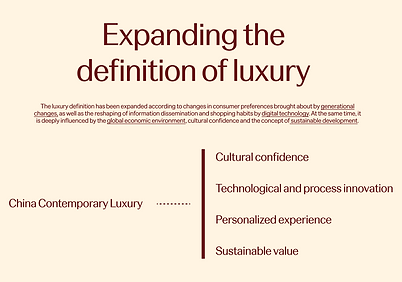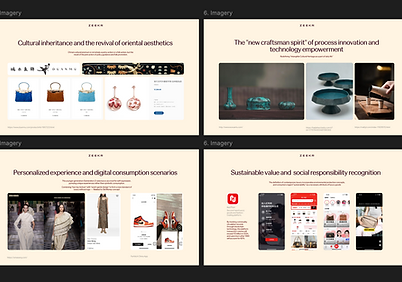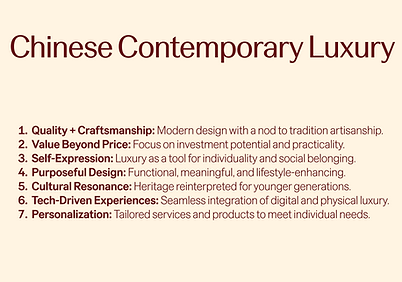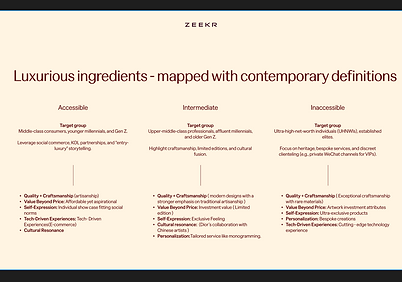
Constructing a practical theory of contemporary luxury
Introduction
This is a ongoing research project on Constructing a Practical Theory of Contemporary luxury.
"Constructing a Practical Theory of Contemporary Luxury" holds core value for the Chinese market by deconstructing the traditional Western luxury paradigm (anchored in historical heritage and scarcity) and establishing a "New Luxury Coordinate System" rooted in the evolutionary logic of Chinese consumer culture. Guided by this theoretical framework, the development of premium electric vehicle (EV) brands leverages dual drivers: technological sovereignty premium (e.g., full-stack self-developed intelligent architectures) and ecological responsibility narratives (e.g., zero-carbon closed-loop production systems). This approach not only mitigates price war risks triggered by homogeneous competition but also transforms sustainability transition costs into cultural capital (such as carbon-neutral certifications functioning as "new identity badges"). By aligning policy imperatives (dual-carbon goals/tech autonomy strategies) with consumer aspirations (Gen Z's affinity for national brands), it constructs a "Chinese Luxury Paradigm" that combines technological leadership and civilizational dialogue capabilities. This paradigm no longer chases Western luxury aesthetics but instead exports a value system through industrial upgrading—redefining luxury as a vehicle for China’s cultural and strategic influence.

01
Factors
"Understanding the factors that influence contemporary luxury serves as the foundation for constructing a practice-oriented theory of contemporary luxury."
02
Concept Translation
Concept Translation Framework that deconstructs abstract ideas into universally interpretable "languages" (how does it affect luxury industry), making complex high-tech concepts accessible to broader audiences.


03
Thinking mode
This mindset refers to a way of defining contemporary luxury through the fluid relationship between luxury, fashion and trends.
04
4 new elements
The analysis of thinking mode has identified four key elements that have shaped contemporary Chinese consumers' perceptions of luxury.


05
Case study
Use case study, a versatile and impactful tool, to get profound insights, actionable solutions, and compelling narratives that can translate concepts into tangible strategies.
06
Make Contemporary Luxury definition
Conduct contemporary luxury definition with explanation for an easier communication purpose.

07

Map the definitions and make it actionable
In the luxury goods industry, “accessible”, “intermediate”, and “inaccessible” are often used to describe the market positioning, price level, and consumer accessibility of luxury goods. The final step is to map the contemporary luxury definition map into the market positioning hierarchy definition so that it can guide design actions